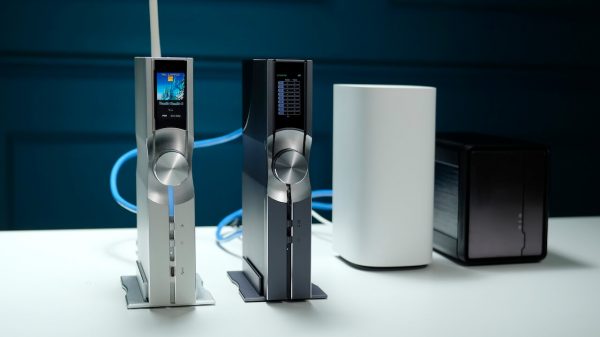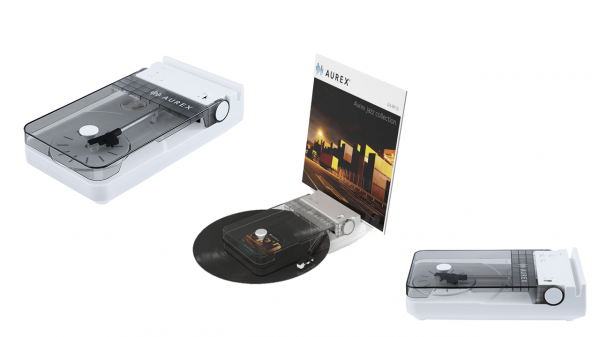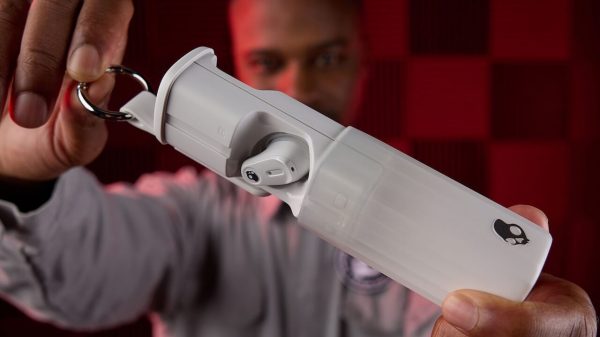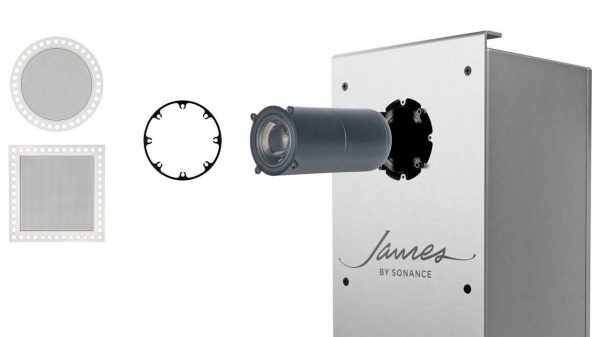In our recent coverage of CES 2023, we previewed and discussed some of the latest consumer A/V innovation that will begin arriving at retailers in 2023 or over the next few years.
However, along with all the new and forthcoming stuff, every year is also the time to lament the discontinuation of products and technology that will take their place in gadget heaven along with the legacy products that ended up in landfills. Laserdisc players, CRT TVs, Betamax, and all of the video game consoles that drove parents crazy going back to the 1970s.
In this article, we take a look at some of the tech products and services that left us in 2022.
iPod

There are few source devices that had as big of an impact on how music is consumed than the iPod. Music downloads and streaming became the primary platform for music delivery and consumption across the globe and we would not have Apple Music, TIDAL, Spotify, or Qobuz in 2023 had the iPod not become a success.
Brands like Astell&Kern, FiiO, and Questyle were able to capitalize on the playback limitations of the iPod to create the high-end DAP market and that has helped push the high-end headphone industry to where it exists today.
It is actually hard to believe that it made its first appearance over 20 years ago. The original iPod enabled anyone to carry a song library with them without changing discs, tapes, or tuning into a radio station.
The iPod evolved to greater capacity and provided additional listening options (Nano, mini, Touch) over the years, but 2022 was the year that its glorious run ended.
For more details and perspective, read our article: Apple Announces End of the iPod
Spotify Car Thing

Spotify launched Car Thing in April 2021. Conceived and marketed as a car dashboard-mounted streaming device for access to Spotify content, demand never really took hold, and supply chain issues didn’t help either, so Spotify has decided to end it.
Looking back, Spotify should have put more energy into Spotify Hi-Fi (more on this later) rather than the Car Thing.
CNN+

CNN has had a rather tumultuous run as the world’s premier cable news network; what was once a leading global source of news has become a highly politicized network with multiple owners and departures of award-winning journalists. How we consume news and information forced CNN to evolve with the times, but not all of those decisions proved to be financially wise.
As a result, the CNN brass thought that a paid subscription service that provided both news and expanded lifestyle content not available on the cable side would enable CNN to soar in the streaming news landscape. However, that was not to be. After about a month of being available, CNN+ had only attracted 150,000 subscribers.
With low subscriber numbers, as well as the fallout from the Warner/Discovery merger, which included CNN properties, CNN+ was seen as a potential big-money loser, so “bye-bye”.
Google Stadia

Google launched Google Stadia with a lot of fanfare in November 2019.
Google Stadia provided cloud gaming services for compatible devices. LG and Samsung both announced it was available on their smart TV platforms and was available on other devices as well. However, Stadia received mixed reviews from users, thus failing to secure a dedicated fan base. As a result, Google pulled the plug on what could have been a great online gaming service. The reality is that Google faced very stiff completion from Sony Playstation Plus, Nvidia GeForce Now, Amazon Luna, and Microsoft’s Xbox cloud gaming platform. To make matters worse for Google, Netflix has entered the online gaming space and there really wasn’t any room for Google Stadia to grow.
It just goes to show that even Google can’t dominate every online service.
EVOCA TV

Evoca TV is a service that came and went with very little fanfare.
Here is the backstory. ATSC 3.0/NextGen TV is in the process of expanding the capabilities of over-the-air TV broadcasting. This includes an extended broadcast range and the ability to provide specialized services.
Evoca was a TV service that was designed to work like cable TV but provided via over-the-air broadcast using the ATSC 3.0/NextGen TV platform.
Built by Edge Networks, Evoca was eventually going to offer 80 news, sports, local, and live TV channels in HD and 4K for about $50 per month. The target customer base were consumers who did not have reliable bandwidth for streaming.
Officially launched in 2020, Evoca TV operated in Arizona, Colorado, Idaho, Oregon, and Michigan. They started off combining local broadcast stations, a few inexpensive cable channels, and regional sports networks in service bundles priced at around $25 a month.
Although the concept was innovative, EVOCA couldn’t attract enough investment dollars to maintain, let alone expand its services into more markets, thus it ceased operations on December 31, 2022.
Tip: Although the demise of Evoca TV will probably not impact ATSC 3.0/NextGen TV implementation, it certainly doesn’t help it because it would have demonstrated an innovative way it could be used.
Blackberry

The BlackBerry first came to the attention of consumers as a paging device in 1999, followed by a series of wireless handheld communication devices manufactured from 1999 to 2016.
They became the first popular smartphones. However, since then there have been a plethora of smartphones, especially those running Android or iOS that have put the Blackberry out of favor with consumers. After 2016, their popularity waned and in 2022, the Blackberry was finally laid to rest.
Meta Portal

First introduced as the Facebook Portal in 2018 and later renamed as the Meta Portal, it was an interesting product that had some potential. Similar to an Amazon Echo Show, it provided video calling capabilities but offered either a landscape or portrait mode screen and a camera that could also follow your movements within certain parameters. There was nothing specifically “wrong” with the Meta Portal – it just fell victim to lackluster adoption by consumers.
As a result, Meta decided to discontinue the consumer versions of the Meta Portal and concentrate on business applications, as well as plans for two related smartwatch products that have yet to be released.
Internet Explorer

After 25+ years of helping people use and experience the web, Internet Explorer (IE) was officially retired and removed from support on June 15, 2022.
For millions, Internet Explorer was the preferred browser. However, as the web evolved more browsers came online. Periodic improvements to Internet Explorer were made but Google felt that the platform couldn’t keep up. Rather than just updating and supporting IE, Microsoft came up with a new replacement browser (Microsoft Edge) which was first offered for use in 2015. Both IE and Edge were being used by consumers, but Edge was faster, more secure, and provided better navigation.
Finally, it really didn’t make sense for Microsoft to offer two browsers, so IE was discontinued in 2022 and users are being notified when they open the browser to switch to Microsoft Edge.
However, although IE has been discontinued, there were some aspects of IE that remain useful and some users still prefer it. As a result, IE lives on within Edge via its Internet Explorer (IE) Mode.
More on the ending of Internet Explorer.
Amazon Glow

Introduced in 2021, Amazon has decided to discontinue Amazon Glow. Designed as a video-calling device for kids and families, Glow was intended to provide an innovative way to make and use video calls.
Instead of communicating via a screen, the Amazon Glow used video projection. The way it worked, is that the device would project an image on the tabletop it sat on, and both the caller and receiver could engage in activities beyond talking.
This included things such as games, art, puzzles, and more. In other words, both the caller and receiver interacted with the same projected image.
Unfortunately, consumers didn’t really respond to the concept and performance wasn’t always consistent. As a result, Amazon Glow will not be pursued into 2023, but who knows, maybe a more refined version could show up in the future as it is an interesting concept.
On the way out?
In addition to the discontinuation of specific products and services in 2022, there are some things that occurred in 2022 that need to be watched.
Spotify HiFi

This is an interesting case. In early 2021, Spotify announced a forthcoming Hi-Fi music streaming tier, but after close to two years of announcements — nothing has materialized.
Spotify continues to dominate the music streaming category, but with Apple Music and Amazon Music HD lowering their prices, Spotify might not have ability to offer Spotify Hi-Fi at a monthly cost that would offer enough benefits for its users who desire lossless streaming. TIDAL and Qobuz continue to grow their market share but have yet to really make a dent in Spotify’s revenue.
There were rumors of a pending launch in 2022 when a Spotify user stumbled onto new settings for a lossless tier, but the streaming giant appears very reluctant to take the hi-res or lossless step at this point.
Onkyo Bankruptcy

According to Neikki Asian, the last remaining piece of Japan-based audio brand and manufacturer, Onkyo Home Entertainment Corporation, filed for bankruptcy in May of 2022.
However, there is more to the story. Voxx and Sharp own Onkyo’s AV business and the rights to use the Onkyo brand name in select regions. According to Voxx International, Onkyo and Integra branded AV products will continue, along with Pioneer and Pioneer Elite.
Auro Technologies Bankruptcy

Auro Technologies is known for its Auro 3D Audio surround sound technology, which is the third immersive surround sound option behind Dolby Atmos and DTS: X. However, its adoption has been slow going since it was first introduced in 2014.
In 2022, the company filed for bankruptcy protection as a way to reorganize as a potential investor agreement fell through.
However, the bankruptcy filing is seen as an opportunity and challenge to restructure the company and bring new impetus to marketing and sales. The goal is to retain all facilities for Auro Technologies as well as its employees. Selling individual patents is said not to be on the table.
So far, Auro Technologies is still active. We will see how this plays out in 2023.
Movie Theaters/Cineworld Bankruptcy

If you strip Avatar: The Way of Water and Top Gun: Maverick out of the 2022 box office tally, it was a very disappointing year at movie theaters. Coming out of the pandemic, movie theater chains have struggled to lure consumers back into theaters and for every blockbuster, there have been 30 films that barely made any money.
Consumers are traveling for the first time in almost 3 years and inflation has taken its toll already on consumer A/V brands that have begun reporting less than stellar Q4 results in 2022. Just how did it get in 2022 for movie chains?
One story that exemplifies this in 2022 was the Cineworld Bankruptcy, and while it failed to take down Regal Cinemas with it in the United States, what’s very clear is that Hollywood has some rough seas ahead when it comes to theatrical releases and the decision to offer them first on the various streaming platforms.
Update 1/20/2023: Cineworld/Regal Cinemas Closes 39 Locations – See The List
Related Reading





























Booker
January 21, 2023 at 1:42 am
Another is Cowon, unfortunately one of my favorite DAP makers, files for bankruptcy proceedings. I still have one of their players, and it just keeps on trucking, the opposite of planned obsolescence. Sad to see them go.
Robert Wright
January 24, 2023 at 3:01 am
Hey, waaait a minute! You opened this article saying Laserdisc is landfill fodder. Plenty of trading, buying and selling on eBay. We still have 2-3 working players and a medium size disc collection. Yes, it’s been long dead due to size and limited picture quality but there are still some retro and vintage A/V lovers out here. They are becoming pretty rare, so for the antique collectors and people who want a piece of A/V history, it’s still fun. With upscalers and Smart TV adjustments I’ve even managed to make them look pretty decent on a 50in 4k!
Ian White
January 24, 2023 at 1:19 pm
Robert,
I owned 3 LD players from 1988 to 1998 and invested heavily in Criterion Collection LDs that I enjoyed until all 3 units finally died.
They proved to be rather competent CD transports as well using the coaxial digital output. I ran one that way into a DAC for 6 years.
Best,
Ian White
Lash
January 24, 2023 at 4:36 pm
People killed the theater experience for me. I used to love the dinner and a movie night, but ignorant people talking and their phones lighting up the space….as well as the constant threat of being gunned down…did it in for me.